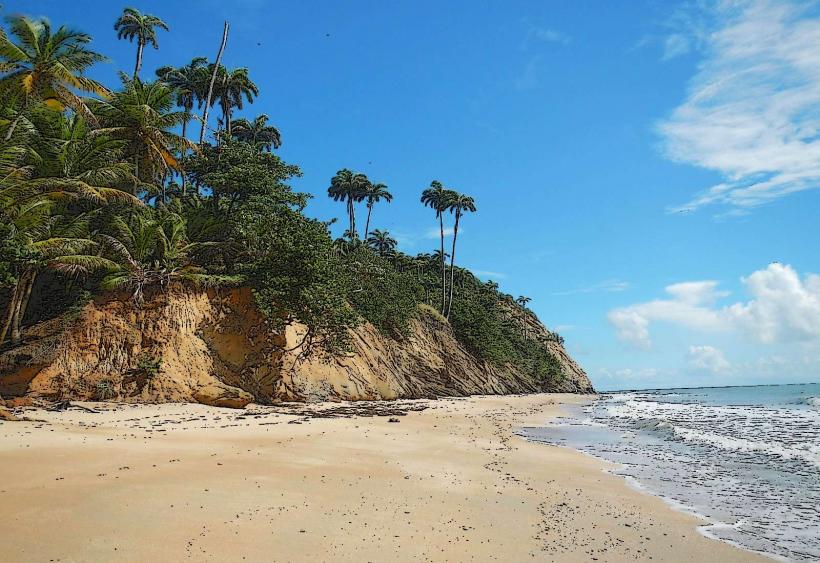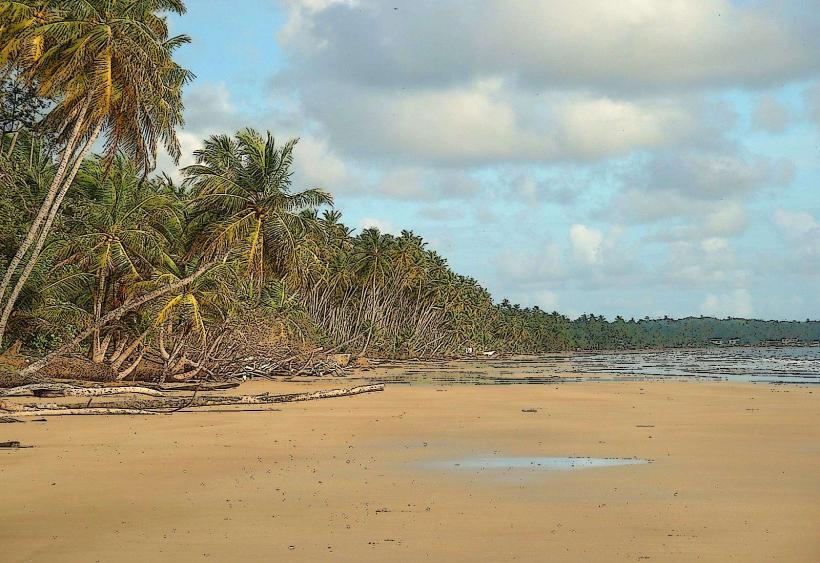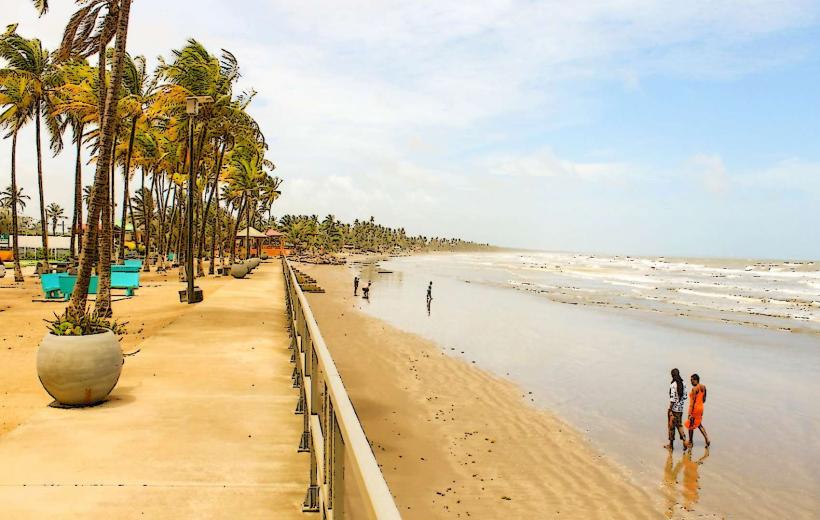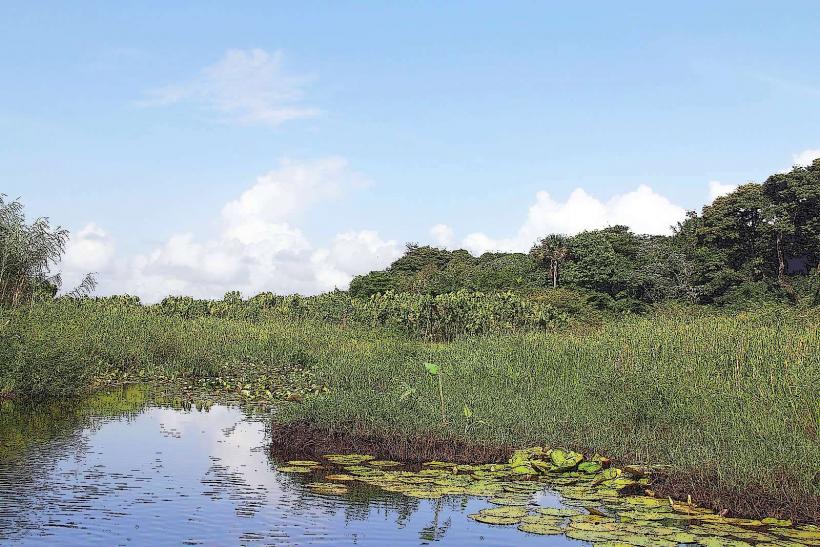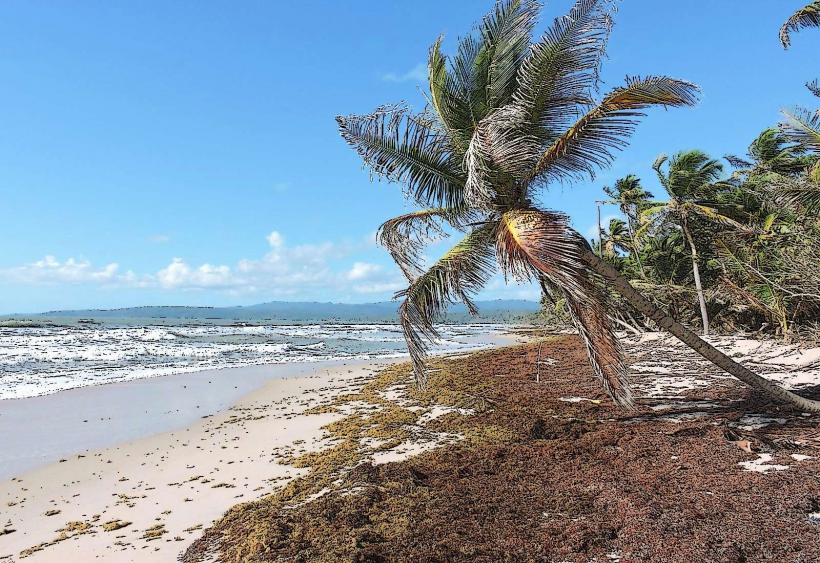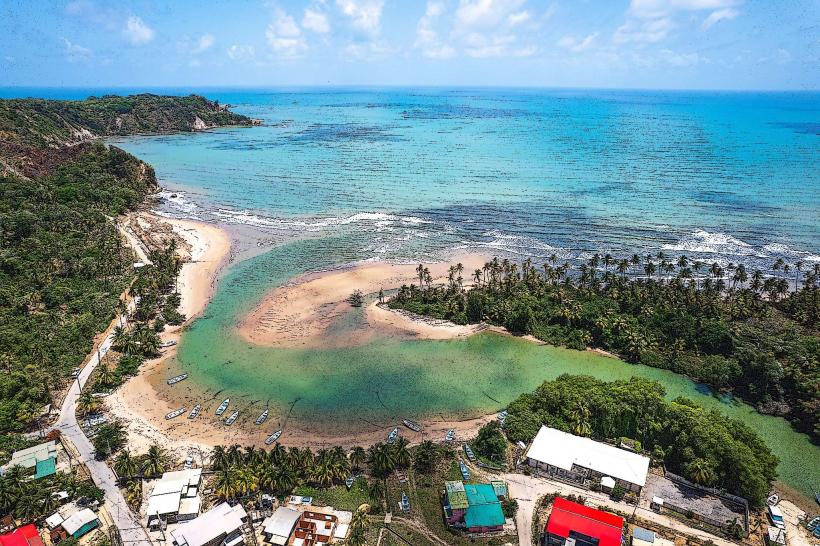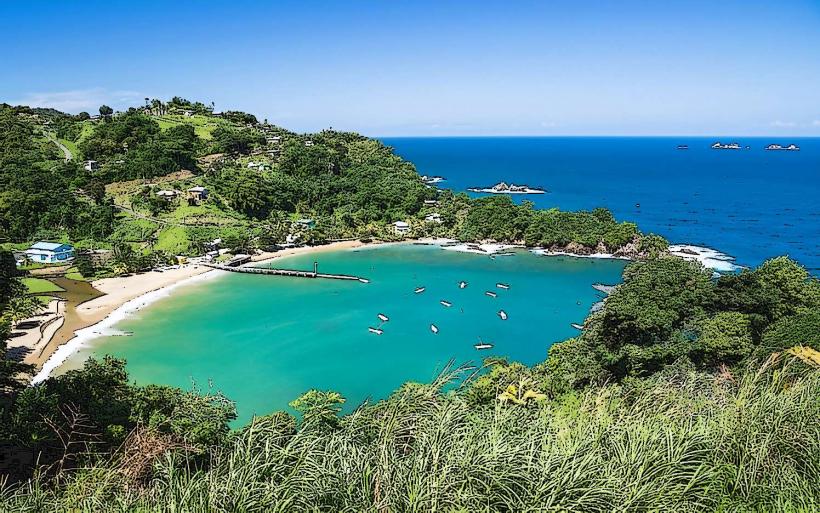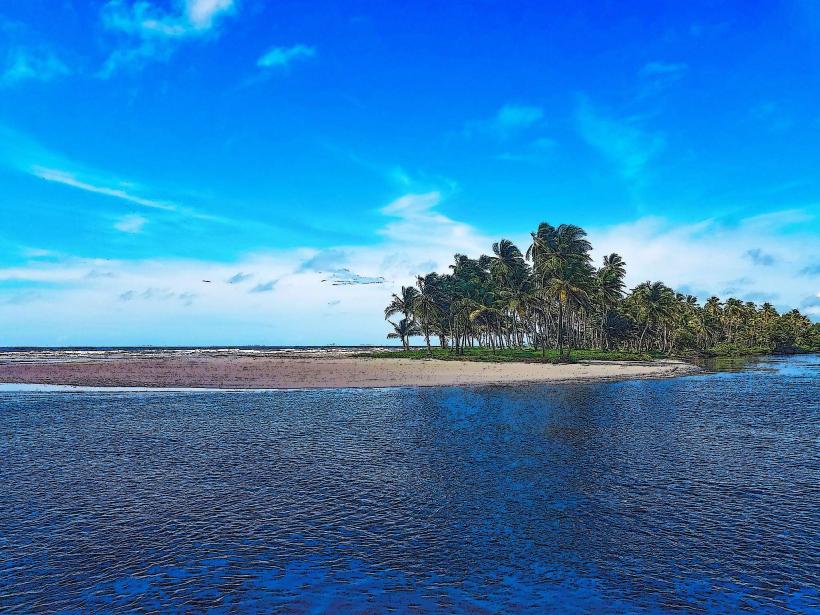Information
Landmark: Manzanilla Bay MangrovesCity: Mayaro
Country: Trinidad and Tobago
Continent: North America
Manzanilla Bay Mangroves is a unique and ecologically significant area located along the northeastern coast of Trinidad in the region of Manzanilla, close to Mayaro. The mangroves here are part of the Manzanilla Bay Coastal Area, which is known for its biodiversity, natural beauty, and the important ecological functions that mangrove ecosystems provide. This area is a vital part of Trinidad and Tobago's coastal ecosystems, supporting a diverse range of plant and animal life, and offering opportunities for eco-tourism, birdwatching, and nature exploration.
1. Geographic Location and Access:
- Location: Manzanilla Bay is located on the northeastern coast of Trinidad, specifically along the Atlantic Ocean. The mangrove forests stretch around the bay, where the freshwater from the Manzanilla River meets the saltwater of the ocean. The bay and surrounding mangrove areas are near Manzanilla Village, situated within the Mayaro district.
- Access: Manzanilla Bay Mangroves can be accessed by traveling from Port of Spain to Mayaro via the Eastern Main Road, then following local roads to Manzanilla. The area is relatively remote, so visitors typically use private vehicles or arrange for local transport to reach the bay.
2. Ecological Importance of the Mangroves:
- Mangrove Ecosystem: The mangrove forests in the Manzanilla Bay area are vital for protecting the coastline, preventing soil erosion, and providing habitat for a variety of species. The mangroves themselves are salt-tolerant trees that grow along tropical and subtropical coastlines. In Manzanilla Bay, the mangrove species include the red mangrove (Rhizophora mangle), black mangrove (Avicennia germinans), and white mangrove (Laguncularia racemosa).
- Wildlife Habitat: The mangrove areas of Manzanilla Bay serve as a rich habitat for marine life, including fish, crabs, and shrimp, which use the mangroves as breeding and feeding grounds. The mangroves also serve as a nursery for juvenile fish species, which eventually move to the open sea. Birds, including herons, egrets, and pelicans, can be spotted in the area, making it a popular location for birdwatching.
- Coastal Protection: The mangrove forests act as a natural buffer, protecting the coastline from storm surges, flooding, and erosion. By stabilizing the soil and reducing the impact of wave action, they help preserve the local coastline and nearby communities.
3. Ecotourism and Activities:
- Birdwatching: Manzanilla Bay is a renowned location for birdwatching. The mangrove forests and surrounding wetlands are home to numerous species of migratory and resident birds. Visitors can spot shorebirds, waders, herons, egrets, and even the occasional scarlet ibis—the national bird of Trinidad and Tobago.
- Kayaking and Canoeing: The calm waters around the mangroves make it an excellent place for kayaking and canoeing. Visitors can paddle through the narrow channels of the mangrove forests, offering a peaceful and immersive way to explore the ecosystem up close. Kayaking in the mangroves allows for the observation of wildlife and provides an opportunity to experience the natural beauty of the area from a different perspective.
- Nature Walks: Nature enthusiasts can explore the surrounding mangrove areas and nearby coastal forests on guided walks. These walks provide an opportunity to learn about the flora and fauna of the mangroves and gain insight into the ecological importance of the region.
- Fishing: Fishing is another popular activity in the Manzanilla Bay area. The mangrove ecosystem supports a variety of fish species, including snapper, bass, and tilapia, making the area a great spot for both recreational and traditional fishing.
4. Wildlife in Manzanilla Bay Mangroves:
- Marine Life: The mangroves of Manzanilla Bay support a variety of marine life, such as fish (including snapper, grunts, and mullet), crabs, shrimp, and mollusks. The mangrove roots act as a sanctuary for juvenile fish, offering them protection from predators while they grow. These fish often migrate to deeper waters as they mature.
- Birds: The area is home to numerous bird species, including mangrove cuckoos, herons, egrets, and ibis. Pelicans and other seabirds are often seen feeding in the waters around the bay. The mangrove environment provides both a habitat for nesting and a food source for many species of birds.
- Reptiles: Various reptiles, such as green iguanas, turtles, and monitor lizards, can be found in the mangrove areas. The green sea turtle is sometimes spotted in the bay, though it is more commonly found in other coastal areas.
5. Environmental Challenges:
- Coastal Development: One of the primary threats to the Manzanilla Bay Mangroves is coastal development. As more land is cleared for housing, agriculture, and tourism, the natural habitat of the mangroves may be affected. Continued development may lead to habitat loss, pollution, and disruption of the local ecosystem.
- Pollution: Like many coastal areas, Manzanilla Bay faces the risk of pollution, particularly from plastic waste and runoff from agricultural activities. Efforts to preserve the mangrove forests and maintain the health of the ecosystem are vital to ensuring their continued ecological function.
- Climate Change: Climate change and rising sea levels pose significant risks to coastal ecosystems, including mangroves. The rising tide could lead to saltwater intrusion and flooding, potentially impacting the delicate balance of the mangrove environment.
6. Conservation Efforts:
- Mangrove Reforestation: Various environmental organizations and local communities are involved in efforts to protect and restore the mangrove ecosystem in the Manzanilla Bay area. Initiatives such as mangrove planting and reforestation are key to maintaining the health of the mangrove forests and ensuring the continued support of local wildlife.
- Environmental Education: Many groups focus on raising awareness about the importance of mangrove conservation and the role that mangroves play in protecting coastal environments. Eco-tourism has also helped draw attention to the value of preserving the bay's natural beauty.
- Protected Areas: There is also potential for creating protected areas around Manzanilla Bay to ensure long-term sustainability of the mangrove ecosystems. Efforts to promote sustainable fishing practices and responsible tourism can help mitigate the environmental impacts on the area.
7. Nearby Attractions:
- Manzanilla Beach: Located near the mangrove area, Manzanilla Beach offers a quiet and scenic location for relaxation. The beach is ideal for picnics, walking, and enjoying the coastal views, though visitors are encouraged to keep the area clean and preserve its natural beauty.
- Mayaro: The nearby Mayaro Beach is another popular destination for those visiting the region. Mayaro offers a range of recreational activities, including swimming, fishing, and water sports. It is a more developed beach area, attracting both locals and tourists.
- Nariva Swamp: A short distance away from Manzanilla Bay is the Nariva Swamp, one of the largest wetlands in Trinidad. This area is a haven for birdwatchers and wildlife enthusiasts, offering a diverse range of flora and fauna. It is home to the manatee and the scarlet ibis, among other species.
8. Best Time to Visit:
- Dry Season (December to May): The dry season is the best time to visit the Manzanilla Bay Mangroves. During this time, the weather is sunny and ideal for outdoor activities such as kayaking, birdwatching, and nature walks.
- Rainy Season (June to November): The rainy season may bring more rainfall, but the lush landscape can offer a different experience. However, it’s important to consider potential flooding and the possibility of more challenging conditions for outdoor activities during this time.
9. Conclusion:
The Manzanilla Bay Mangroves represent a unique and ecologically important part of Trinidad’s coastline. With its rich biodiversity, the area serves as a vital habitat for marine life, birds, and other wildlife. It offers excellent opportunities for eco-tourism activities like kayaking, birdwatching, and nature walks, while also serving an important role in protecting the coastline. Visitors to the area can enjoy the natural beauty of the mangroves and the surrounding landscapes, while also contributing to the conservation efforts that ensure these vital ecosystems are preserved for future generations.

